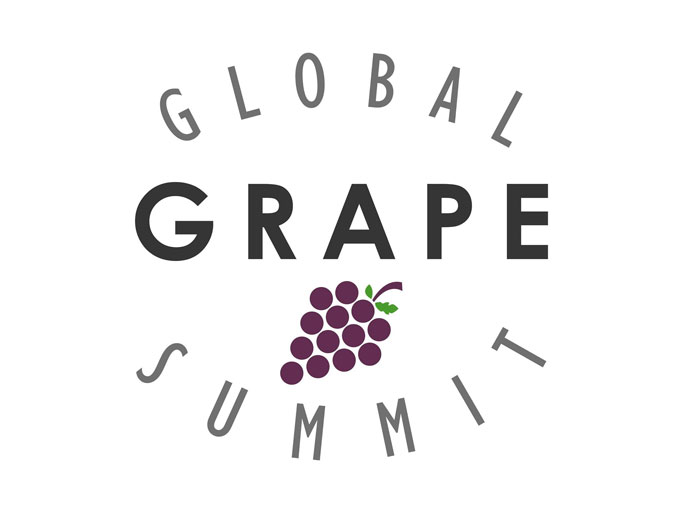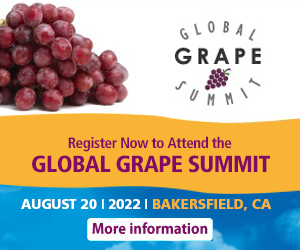There’s Much More to Grapes Than Just Buying and Selling
July 11, 2022 | 4 min to read

Each year at The New York Produce Show and Conference, we bring in students from various universities who, we hope, will be interested in careers in produce. They have come from as far away as the University of Gastronomic Sciences, located in Pollenzo, Italy, Harper Adams University in the UK and as near as Cornell University in New York, Rutgers University in New Jersey and the University of Connecticut.
We’ve had excellent reports on how many of these students wind up working in the produce industry, yet the numbers are distorted in a sense, as many of those who request an opportunity to attend the New York Show come from families already deeply immersed in the produce industry. They probably would have worked in the industry with or without a visit to our event.
One thing has become obvious as the years have passed: The vast majority of students attending the event, although genuinely interested in working in the produce industry, are not thinking in terms of buying or selling fruits and vegetables.
They are interested in IT, in food safety, management, sometimes growing, but many of the ones interested in growing are usually in the context of building Controlled Environment Agriculture facilities funded by enormous venture capital investment.
At the same age, I learned a very different understanding of the produce industry when my father put me on the loading dock in our operation at Hunts Point. He set me next to Joe Pellicone, now at D’Arrigo New York, and he told me I should watch a master at work on both buying and selling. I listened and learned.
My father, Mike Prevor, was an extraordinarily innovative man. He was a pioneer in both export and import, opened supermarkets when the wholesale business looked troubled, invested in growing operations using Israeli drip irrigation technology in Puerto Rico, opened offices in Tokyo, Japan, Caracas, Venezuela, Sweden, and elsewhere. But, to him, the heart of the industry was still the trade — the buying and the selling of fresh produce.
I thought of all this as Sun World held the grand opening of its Sun World International Center for Innovation. Sun World has always been innovative. When Howard Marguleas passed away, we wrote of growing up in an industry filled with innovations, such as DiVine Ripe tomatoes, seedless watermelon, Le Rouge Royale peppers and a cornucopia of grape and tree fruit varieties. Indeed, the new Innovation Center is dedicated in the memory of Howard Marguleas.
Yet, when the history of the industry is written, it may well turn out that Howard’s most important gift to the future of the industry was his son, David Marguleas, now the CEO of Sun World. For David recognizes the produce industry has changed and that value creation is now, very often, found on the breeding and genetics side of the business.
David first innovated a variety licensing model that focused the industry on high quality varieties that could be grown from South Africa to Italy, from Spain to Australia, from Chile to Mexico to Australia, New Zealand and beyond. In time, he engineered the sale of Sun World’s extensive U.S. growing operations, to focus the company on scientific advancement and broadening the reach of its high quality varieties to other producers in the U.S.
The model has been so important that others have jumped on the concept. Indeed, the quality of grapes and stone fruit has improved so broadly the industry now confronts a new issue: How do we educate consumers on the value of this cornucopia of new varieties? How do we make sure retailers join the production sector to offer consumers not cheap fruit that will be disappointing, but the best varieties that will delight consumers and lead to more consumption?
Back in pre-pandemic days, we launched The Global Grape Summit to help the industry wrestle with these important issues. Now with product innovation spreading around the world, and across many products such as berries and apples, we are focused on finding post-pandemic ways to help the grape industry discover a path to delight consumers, increase consumption and boost profitability.
That requires research to develop the best varieties, and selection to grow the best fruit, but it also requires thought as to how to market both in the trade and to consumers. The pandemic made the kind of industry interaction required to move forward more difficult. So, this year we bring back The Global Grape Summit, locating it in Bakersfield, California, in the midst of the breeders’ field days where they showcase new varieties.
Here, we will open the door to not only new varieties but new opportunities in marketing and consumer outreach. My father used to buy from Howard Marguleas to ship his innovations and bounty to Europe, Africa and the Caribbean. As we build this conference to find paths to move the industry ahead, I like to imagine David’s father and mine looking down and being pretty proud of what time and innovation are bringing to the post-pandemic produce industry in 2022.
If you are interested in being part of the future we are building for the grape industry and beyond, email us at info@globalgrapesummit.com and join us at The Global Grape Summit, August 20, 2022, in Bakersfield, CA.

